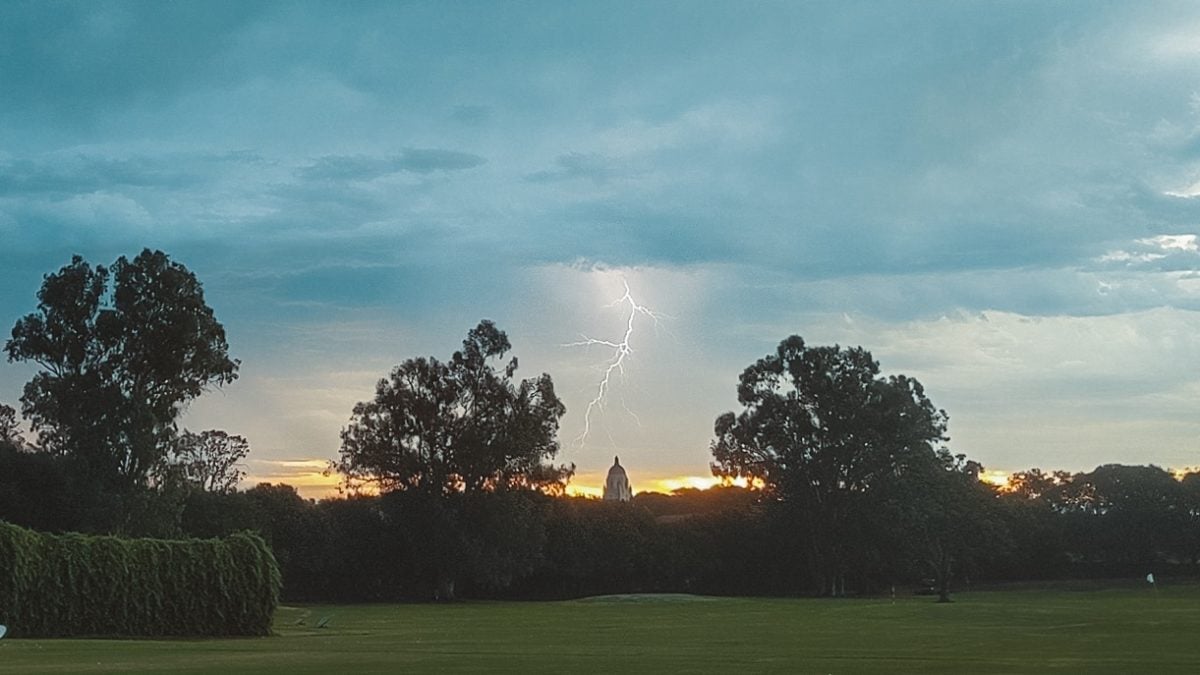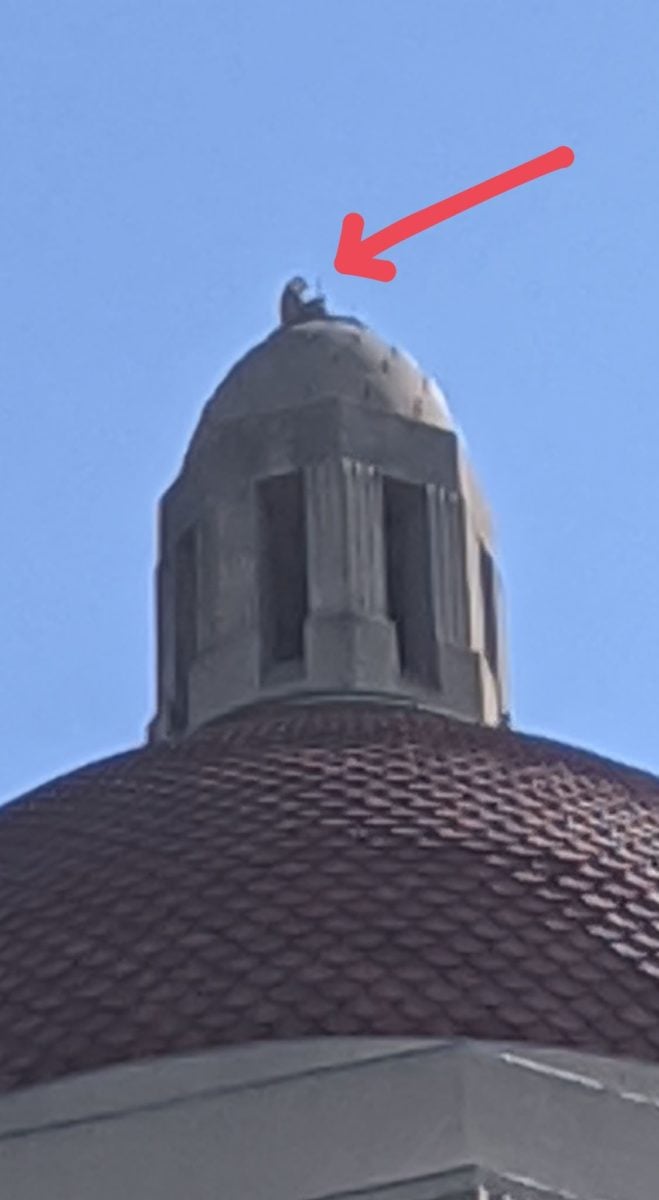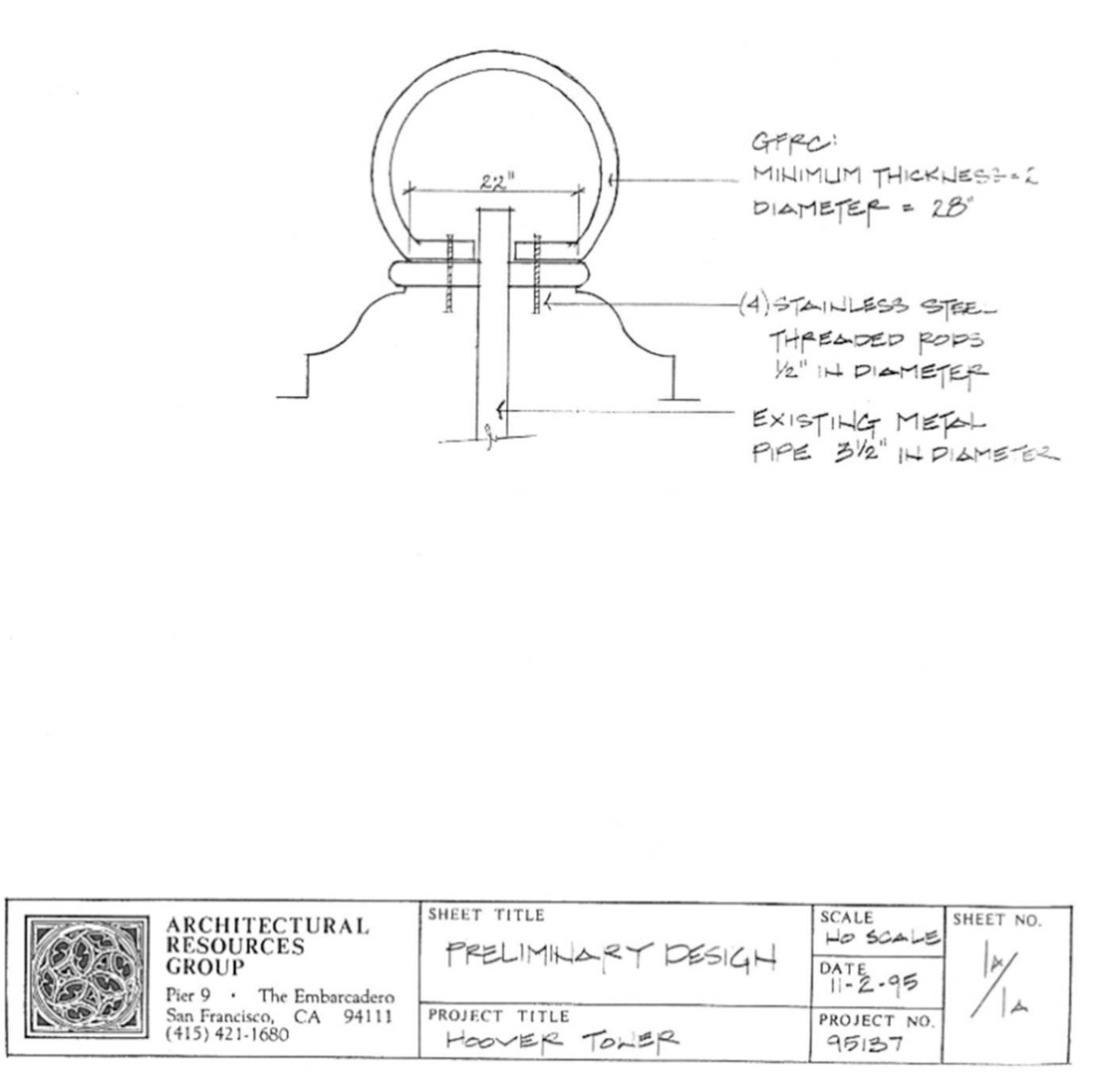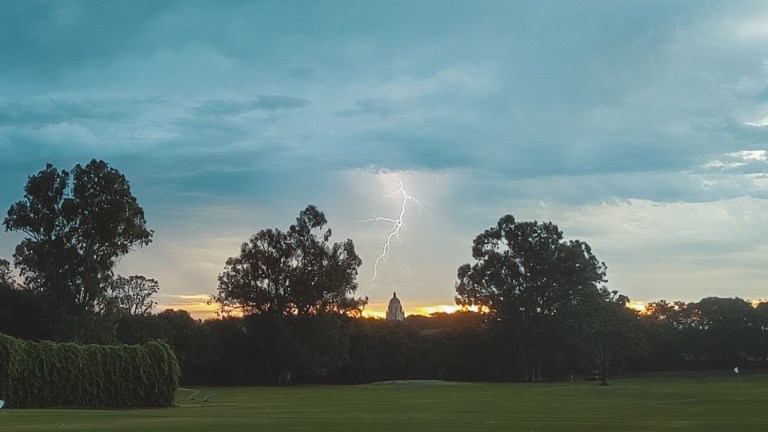A lightning struck Hoover Tower last Sunday morning, shattering its concrete orb and scattering debris, according to the Hoover Institution’s Assistant Director of Operations Jeffrey Jones.
The damage resulted from a thunderstorm affecting the Bay Area from Aug. 15 to 16, a rare phenomenon for its size in the region. Lightning struck the iconic Stanford tower for the first time since Dec. 2, 1970.
Assessments for damage are underway, and the top priorities are “sealing the punctured roof and removing the broken orb.” Moving forward, according to Jones, “all options” are being explored to improve safety in case of another lightning strike in the future.
Mikey Fischer, a sixth-year computer science Ph.D. student, said that he was at the Stanford driving range around 6:43 a.m. when he noticed lightning striking Hoover Tower.
He used an app to track clouds for the “best chance of getting a good shot.” Holding his Android Pixel 3 XL against the fence, he caught a video.
“It happened really super quickly,” Fischer said.

Later in the day, he visited the tower and could see from the ground that the orb on top had been damaged, on the right side, looking from Jane Stanford Way.

Fischer posted images of the lightning strike and debris on the popular Facebook page Stanford Memes for Edgy Trees, writing, “The seal has broken. The ball on Hoover Tower has been busted. The hour is here when Herbert Hoover shall rise from his grave to impose fiscal discipline and crash the American economy.”
Over 500 members reacted to the post. “Call it the wrath of some higher power, punishing Stanford for its shortcomings in providing for the well-being of its students,” commented former Daily writer Jacob Nierenberg ’17.
Nierenberg told The Daily that his comment “came, at least in part, from a place of humor.”
Jones wrote in a statement to The Daily that the Hoover Institution received a call from “work control” around noon on Sunday with Stanford Department of Public Safety (SUDPS) reporting about the possibility of damage from a lightning strike.
Jones described the ball as “hollow,” constructed of 2″ thick glass fiber reinforced concrete (GFRC).

The ball didn’t resist the lightning impact with “small to medium size chunks of debris” strewn onto the first- and second-floor roofs, the front steps and the lawn, according to Jones.
Systems appeared to be in place to prevent greater damage. He said that early indications point to a lightning conductor installed when “the current ball was placed on top in 1995.”
It is unclear if this is the only damage done by the thunderstorm. The University did not respond to a request for comment.
The tower’s observation deck has been closed since mid-March due to concerns surrounding the spread of COVID-19. Jones wrote that the area surrounding the tower was closed as of Tuesday and will remain cordoned off until “clean up and repairs can be coordinated.”
Contact Anna Milstein at annamil ‘at’ stanford.edu.
